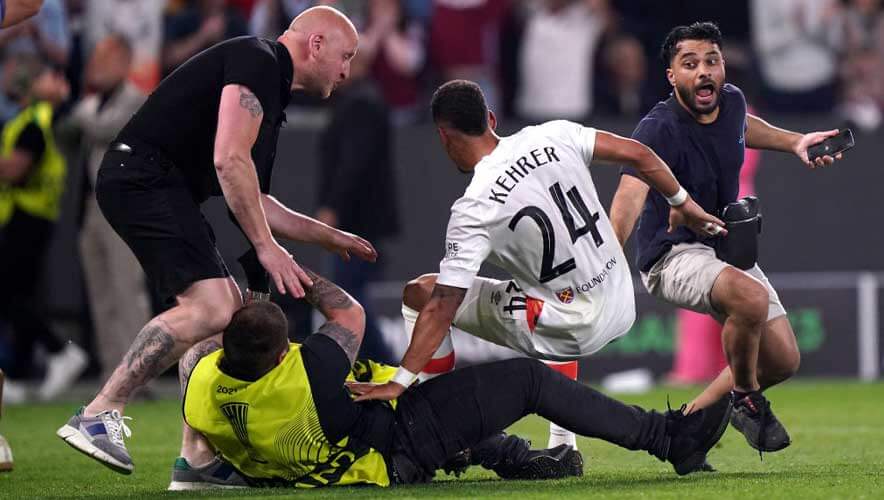The Forgotten Mission of Security Operations for Venues
Behind the scenes of some of the biggest events on the horizon, including the Paris 2024 Olympics, FIFA World Cup, the Major League Baseball World Series, and many more, are security leaders tasked with an overwhelming amount of internal and external logistics.
In these cases, large swaths of security professionals collaborate to execute lengthy tabletop exercises, gather intelligence from numerous sources in real-time, work with area emergency services teams, and attempt to reduce risk in any way possible.
But what about day-to-day operations when Fenway Park is sitting empty, save for a few facilities’ maintenance folks? Or when AT&T Stadium is between events? Security for these venues is a 24/7/365 endeavor, which means security technology needs to be in line with these demands—both during and between major events.
Security leaders for event venues and stadiums can’t afford to miss some of the key elements of protection during these “between” times.
Here’s where the opportunity exists to ensure ongoing oversight.
Continuous Development of Public-Private Partnerships
Think about the coordination it takes to pull off an event as large as the Super Bowl. Traffic congestion, spillover of fans and an influx of visitors into surrounding communities, tailgating events, and (unfortunately) unruly behavior or potential health events that are passed along to external authorities.
The relationships built through public-private partnerships become essential to the success of an event venue and stadium security program. The ability to course correct while an event is unfolding, communicate essential information effectively to expedite response, and follow up for investigations mean that ensuring these relationships remain in place becomes almost as imperative as the technology used to convey critical communications.
Addressing Staffing Issues Head-On
A common theme around large-scale event security is how essential staffing becomes to a security program. These venues rely heavily on the presence of security personnel to keep incidents at bay, address threats as they become aware of them, and create a barrier for those looking to harm players and spectators alike.
Intuitive technology can mean the difference between becoming proficient at your role quickly or having a long, complicated onboarding period.
But the challenges of this remain across multiple vertical markets: attrition across sectors. In 2006, the national annual turnover rate for security guards was estimated to be between 100 percent to 300 percent, according to the Service Employees International Union. While there are no official recent numbers to verify this hypothesis, not much appears to have changed. The amount of knowledge around standard procedures for response, venue knowledge, and training resources needed to address this high level of turnover can be detrimental to already taxed security programs.
While security technology can’t—and won’t—fully replace guard and field resources in many cases, it can be strategically used to better train these resources, make it easier to learn technology systems that are in place, and augment response.
For example, the implementation of systems that provide embedded standard operating procedures based on incoming incident types can help guide operators and guards on how to handle next steps—whether it’s by calling for a field resource to investigate an incoming alarm or being instructed to immediately call emergency services.
Intuitive technology can mean the difference between becoming proficient at your role quickly or having a long, complicated onboarding period.
Keeping Operational Efficiency Top-Of-Mind
One thing you can’t lose in the world of large-scale stadium events is the ability to remain operationally efficient in the face of multiple crises, all unfolding at breakneck speed.
These agencies cannot do their jobs without the ability to quickly get up-to- speed on what’s unfolding in real-time.
Day-of events—and even when the area surrounding a venue requires additional oversight because of public protests or nearby gatherings—require the ability for response to be efficient and effective. It’s why so much emphasis is placed on building relationships with the public sector.
But these agencies cannot do their jobs without the ability to quickly get up-to-speed on what’s unfolding in real-time. For example, being able to quickly download and send over accompanying video, voice memos, and notes from responding field resources can mean all the difference when emergency responders are approaching an active incident.
Sharing information, being able to access data quickly, and assessing response times post-event are essential in building a security program that is operationally efficient, forward-thinking, and can meet the needs of its patrons.
Streamlining Communication Protocols
One of the biggest ways to contribute to better response is through better communication between stakeholders. And this can be implemented in two ways.
First, through the security leadership to the broader organization. This means that physical security has a seat at the table with executives, can communicate goals and objectives that align with business goals and strategies, and share across departments when opportunities arise.
Second—and more tactical—is the ability for communication to be streamlined to and from a central command center or operations center. This includes communication from global security operations center (GSOC) operators to guard and field resources, from GSOC operators to emergency services when an incident calls for it, and from field resources to the GSOC simultaneously. It helps to have technology that enables streamlined communication across these stakeholders.
Blurring the Lines Between Cyber and Physical Security
Investing in security technology—especially in cloud-based solutions—requires a level of coordination with your technology teams that is elevated beyond a line item in a memo.
Oftentimes in large operations that need additional cybersecurity oversight, security technology investment is made with the heavy involvement of IT leadership, so it becomes essential to understand the requirements of the organization in making these purchasing decisions. The earlier the IT team is brought in, the better, as it may see vulnerabilities or identify ways to speed up the implementation process that you do not. Additionally, IT colleagues may be able to identify ways to better align network security with physical security that better protects the organization from external threats.
As stadiums and venues continue to build their presence during events, it’s important to note the ongoing work that happens when very few people are in the building. Security never sleeps. Being able to build on the work being done, improving the efficiencies of the program, and bringing in advanced technology to augment the workforce is the play moving forward. Everything else is just noise.
Ryan Schonfeld is the founder and CEO of HiveWatch, a security technology company reimagining how companies keep their people and assets safe. With experience as a security consultant, law enforcement officer and an end user at a Fortune 500 organization, Schonfeld recognized the need for security leaders to be more aware, connected, proactive, and informed, which is why he created HiveWatch. Schonfeld is a member of the ASIS International Emerging Technology Community Steering Committee.
© HiveWatch, Inc.











